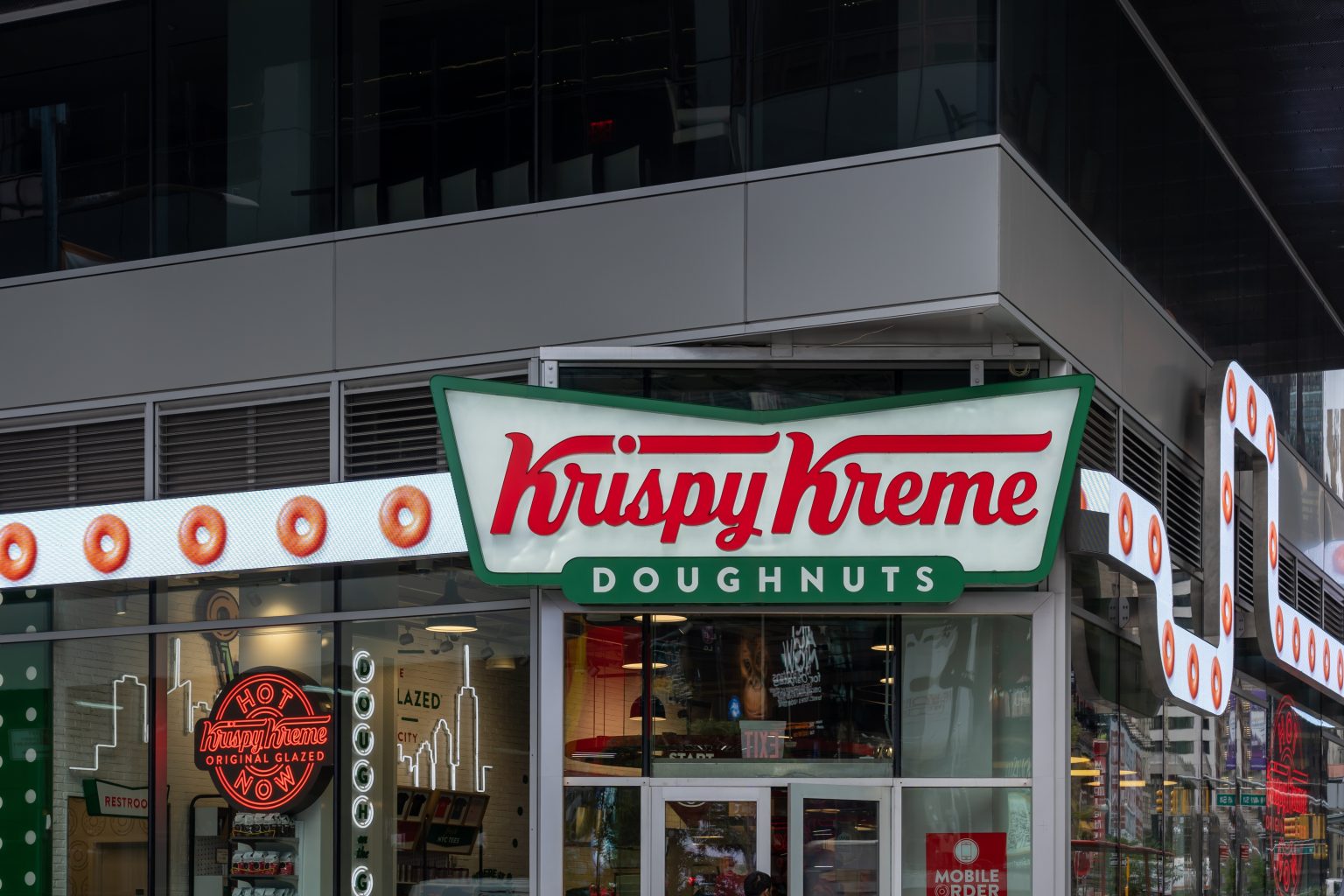Krispy Kreme, Inc.’s partnership with McDonald’s is just the beginning. As the company continues to develop its hub-and-spoke infrastructure to serve McDonald’s outlets nationwide, it is also looking to expand its reach to retailers such as Walmart, Target, and Kroger on a national scale.
Joshua Charlesworth, president and chief executive officer, stated during an 8 August conference call to discuss second-quarter results that the McDonald’s relationship is “a bit of a catalyst” for Krispy Kreme, enabling its delivered fresh daily (DFD) business to expand more rapidly.
“Our biggest opportunity is to make it easier for people to buy our fresh doughnuts,” he said. “We are doing this by increasing availability through our doughnut shops, online and by delivering fresh daily to grocery convenience stores and quick-service restaurants and the pace of our expansion is accelerating…With existing customers, such as Walmart, which still only lists us in about 25% of their stores, we are exploring the opportunity to go nationwide. We have agreed to expand with Target, a new customer this year.”
During the call, Charlesworth provided additional details about the planned rollout of Krispy Kreme doughnuts nationally at McDonald’s restaurants.
“Starting in Chicago, we expect to serve fresh doughnuts in more than 1,000 McDonald’s restaurants by the end of the year, add 5,000 in 2025 and 6,000 in 2026 bringing us to more than 85% of the US footprint,” he said.
Key to the successful execution of these plans is the buildout and expanded utilisation of the company’s 151 US hubs with spokes. Currently, the hubs serve an average of 50 points of access each.
“We expect this to increase to over 100 by 2026, improving efficiency and profitability,” Charlesworth said.
Additionally, the company has set a goal to add 30 new hubs by the end of 2026 in support of its expansion plans.
“We’re on track to achieve this goal and have 17 of the 30 hubs already underway, including Seattle, Minneapolis and Philadelphia,” Charlesworth said.
The company’s immediate priority is to serve its largest customers, but Charlesworth noted that there are additional opportunities in the longer term.
“It’s really a great combination,” Charlesworth said. “C-stores and other smaller locations, smaller lower traffic locations, are actually still very helpful to us … So, we still see a role for those to play, but naturally, we’re focused on those big national partners that the McDonald’s programme unlocks for us.”
In the quarter ended 30 June, Krispy Kreme reported a loss of $5.49 million, compared with net income of $223,000, equal to less than 1¢ per share on the common stock, in the second quarter of last year. Sales were $438.9 million, up 7% from $408.9 million.
Adjusted net income in the second quarter was $9.11 million, or 5¢ per share, down 20% from $11.4 million, or 7¢, in the second quarter last year. The decrease was primarily attributed to increased depreciation and amortisation linked to “the strategy of making fresh doughnuts more available and Insomnia Cookies’ continued expansion.”
Adjusted EBITDA in the quarter was $54.7 million, up 12% from $48.8 million. EBITDA margins widened by 60 basis points to 12.5% from 11.9%. The improvement reflects the “optimisation” of the company’s hub-and-spoke strategy, alongside efficiencies gained, lower compensation costs, and other cost controls, Krispy Kreme said.
Krispy Kreme lowered its guidance for adjusted earnings per share to 24¢ to 28¢ per share, down 3¢ from its previous guidance of 27¢ to 31¢. Organic sales growth was revised downward to 6% to 8% from 5% to 7%. Management attributed both decreases, as well as other guidance updates, to the sale of a stake in Insomnia Cookies. The company anticipates net sales of $1.65 billion to $1.69 billion for the year and adjusted EBITDA of $215 million to $220 million.
Investor response to the results and the update was positive. The company’s shares rose by $1.24, or 13%, in trading on 8 August on Nasdaq, closing at $10.44. Shares, however, remained well below the stock’s 52-week high of $17.84.
In the United States alone, Krispy Kreme’s adjusted EBITDA was $32.7 million in the second quarter, up 16% from a year earlier. The company reported that EBITDA margins widened by 80 basis points to 11.3% thanks to labour and waste optimisation and productivity benefits associated with the hub-and-spoke model. Offsets included promotional activity and McDonald’s start-up costs.
International margins narrowed due to sluggish volumes in the United Kingdom. Management indicated that steps were being taken to improve UK performance and noted that global points of access to Krispy Kreme increased by 2,981, or 23%, from a year earlier, to 15,853 at the end of the second quarter.

